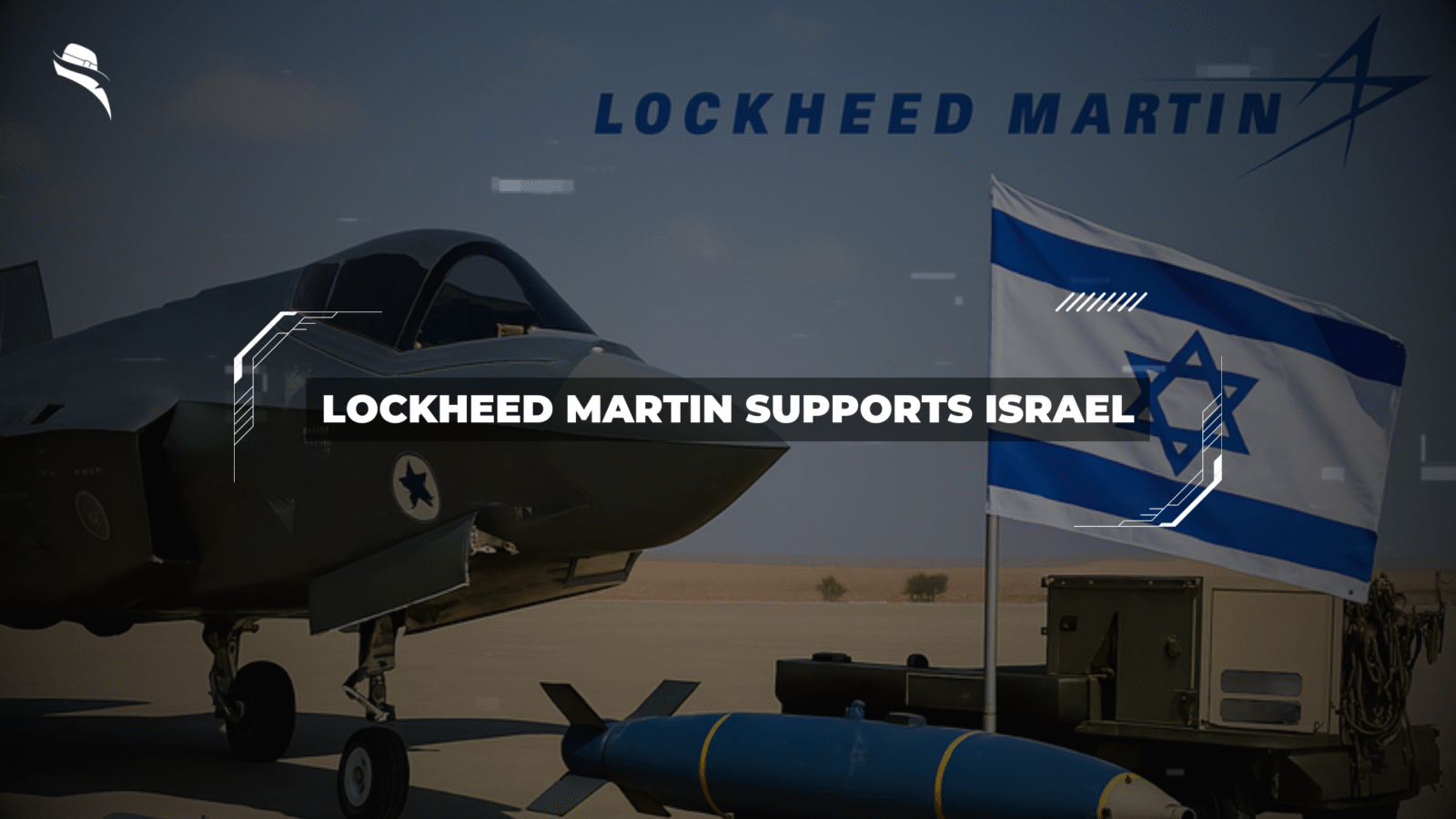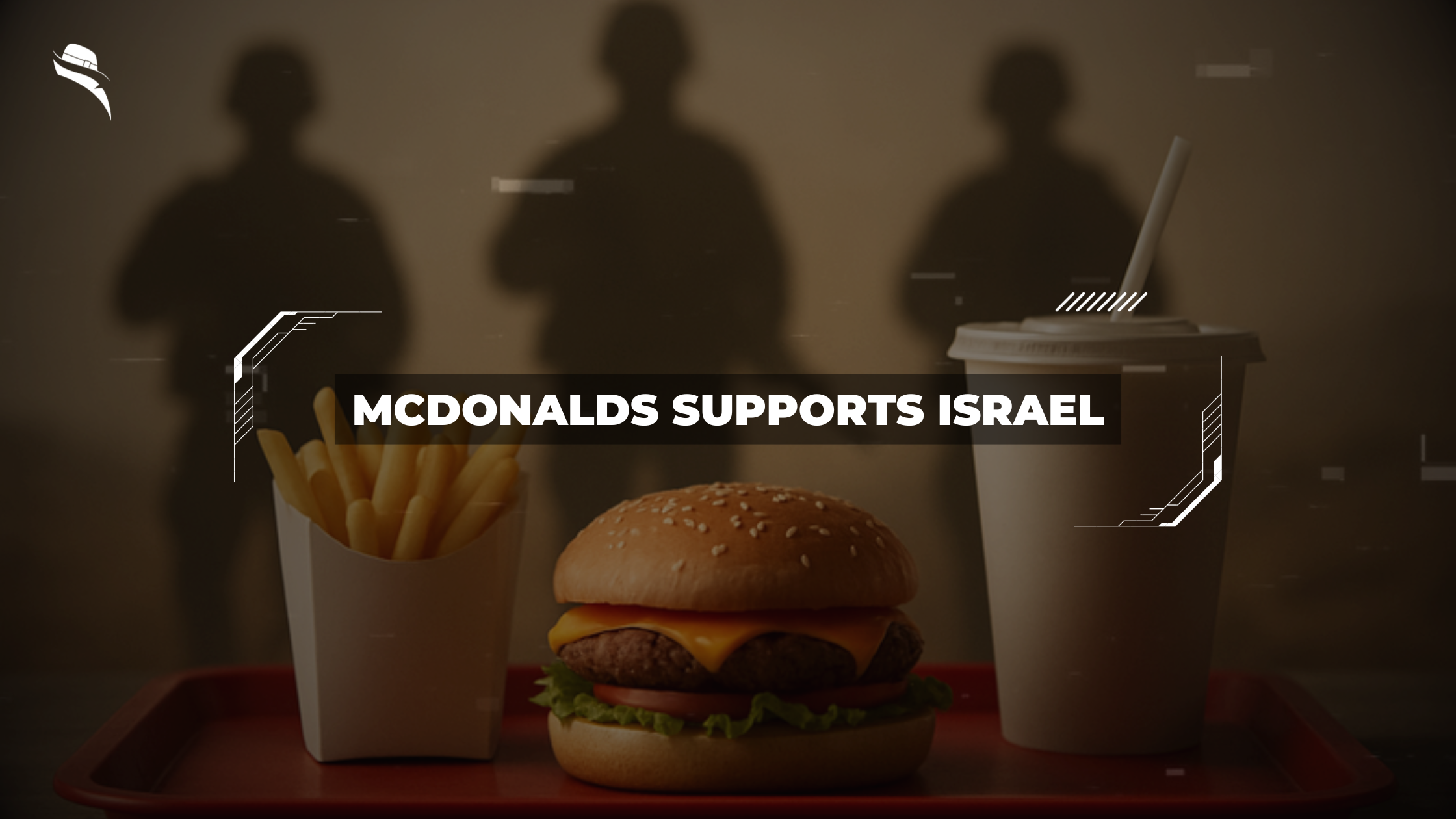Lockheed Martin supports Israel with some of the most advanced military aircraft in the world. Israel became the first country to use the F-35 fighter jets in combat on May 22, 2018, marking a significant milestone in modern warfare technology. Since December 2017, when the initial nine F-35s became operational with the Israeli Air Force, these aircraft have transformed Israel’s military capabilities. In fact, as of November 2022, Israel had 36 F-35s in service, each costing approximately $96 million.
The relationship between Lockheed Martin and Israel extends beyond just providing F-35 fighter jets. Israel has shown particular interest in customizing these aircraft, specifically focusing on radar, electronic warfare, communications systems, and independent maintenance capabilities. However, this military support has raised serious humanitarian concerns, particularly regarding operations in Gaza, where Israeli airstrikes have resulted in at least 56,500 deaths since October 2023. Furthermore, in just the first three weeks of conflict, Israeli warplanes dropped 25,000 tons of explosives on Gaza, with the F-35 squadron logging over 15,000 flight hours since the beginning of military operations.
How Lockheed Martin Supports Israel’s Air Power
The military partnership between Lockheed Martin and Israel has evolved into one of the most technologically sophisticated defense collaborations in the world. At the core of this relationship lies a comprehensive arms supply program that extends beyond basic procurement to include advanced customization and ongoing support.
Overview of the F-35I Adir program
Israel’s F-35I “Adir” (Hebrew for “mighty”) stands apart from standard F-35s through extensive modifications tailored to Israel’s specific defense needs. The Israeli Air Force (IAF) maintains its own maintenance centers for these aircraft, demonstrating a level of technical independence unique among F-35 operators. Additionally, Israel secured the ability to install its own electronic warfare systems in the F-35I, ensuring compatibility with existing Israeli military frameworks.
The F-35I program represents a significant financial investment as well. Beyond the initial aircraft cost, Israel committed approximately $1.4 billion for related equipment and services, including pilot training, spare parts, and support systems. This investment allows Israel to maintain one of the most advanced air forces in the Middle East, capable of conducting missions across multiple theaters simultaneously.
Precision weapons and advanced systems
Alongside the F-35 platform, Lockheed Martin provides Israel with an arsenal of precision munitions. These include Joint Direct Attack Munitions (JDAMs), which transform conventional bombs into precision-guided weapons, and Small Diameter Bombs (SDBs) that allow for reduced collateral damage while maintaining effectiveness against hardened targets.
Israel also deploys Lockheed Martin’s AGM-114 Hellfire missiles, primarily from its helicopter fleet, and the newer SPICE (Smart, Precise Impact, Cost-Effective) guidance kits that can be fitted to existing munitions. These systems allow the IAF to conduct surgical strikes against specific targets, though questions remain about their implementation in densely populated areas.
The partnership extends to intelligence and reconnaissance capabilities as well, with Lockheed Martin providing advanced sensor packages that enhance Israel’s ability to identify and track potential threats across the region.
Strategic importance of U.S.-Israel defense ties
The defense relationship between the United States and Israel transcends simple arms sales. Rather, it represents a cornerstone of American Middle East policy that has persisted across multiple administrations. The U.S. provides Israel approximately $3.8 billion in military aid annually, much of which returns to American defense contractors like Lockheed Martin.
Moreover, the relationship offers mutual technological benefits. While Israel receives cutting-edge military technology, Lockheed Martin gains valuable operational feedback from the IAF’s real-world deployment of its systems. This combat-testing environment provides insights that would be impossible to replicate in controlled testing scenarios.
The strategic partnership also extends to joint military exercises, intelligence sharing, and collaborative research and development initiatives. Through these activities, both nations strengthen their respective defense capabilities while reinforcing diplomatic and political ties that serve broader geopolitical objectives in the Middle East.
The Global Supply Chain Behind the F-35
Behind every F-35 fighter jet lies an intricate global supply chain that spans continents, involving thousands of manufacturers and complex logistics networks. This sophisticated system ultimately enables the aircraft’s deployment in military operations worldwide, including those conducted by Israel.
Over 1,400 suppliers across multiple countries
The scale of the F-35 program is truly staggering. Lockheed Martin coordinates with approximately 1,400 suppliers across 47 states and Puerto Rico, though other sources indicate the number may be even higher, between 1,650 and 1,900 suppliers. These manufacturers collectively support over 290,000 U.S. jobs, including an estimated 22,750 union jobs.
The program’s international footprint extends beyond American borders:
- Suppliers from at least 10 countries contribute parts or components for F-35 manufacturing
- The F-35 program involves 16 participating countries, including Israel, under the US Security Cooperative Participant program
- British Aerospace produces electronic warfare systems and vehicle management computers in New Hampshire and New York
- Australian companies manufacture vertical tail sections for certain F-35 variants
Each aircraft requires approximately 42,000 labor hours to complete, highlighting the enormous complexity of assembling these advanced fighter jets.
Role of Maersk in transporting components
Maersk Line Limited (MLL), a US-flag subsidiary of the Danish shipping giant, plays a crucial role in the F-35 supply chain. Indeed, MLL is one of nearly a hundred logistics companies supporting the global F-35 program with vendor-to-vendor transport services.
Currently, Maersk operates a recurring shipping cycle between Lockheed Martin’s Fort Worth facility in Texas and Israel Aerospace Industries. According to research, this process involves transporting empty F-35 wing containers from Houston to Ashdod, Israel, where they are loaded with completed F-35 wings before being shipped back to the US for final assembly.
Interestingly, the port of Rotterdam serves as a key stopover point in this logistical chain, especially after Maersk adjusted its routes to avoid Spanish ports, where activist campaigns have attempted to block shipments.
Assembly and maintenance logistics
The epicenter of F-35 production is Air Force Plant 4, a US government-owned facility operated by Lockheed Martin in Fort Worth, Texas. Nevertheless, the maintenance infrastructure spans globally to support the growing fleet of operational aircraft.
Defense Logistics Agency (DLA) Distribution centers store F-35 retail parts at six warehouses located at Air Force and Navy industrial sites. Two DLA Distribution centers also support global wholesale demands by storing parts for the F-35 Global Spares Pool, which replenishes supplies for over 860 F-35s fielded across 16 countries.
Despite the program’s complexity, Lockheed Martin continues to streamline production and maintenance. In 2024, the Department of Defense awarded the company a $3.37 billion contract modification for expanded logistics support for the F-35 program, underscoring the ongoing investment in this critical supply chain.
Legal and Political Controversies
The F-35 fighter jet program has become entangled in complex legal battles across Europe, as courts weigh national security interests against humanitarian concerns in Gaza. These legal challenges represent unprecedented attempts to restrict military exports through judicial action.
UK High Court ruling on F-35 parts exports
In June 2025, Britain’s High Court ruled that the government’s decision to continue exporting F-35 fighter jet components to Israel was lawful, even while acknowledging these parts could potentially be used in breaches of international humanitarian law in Gaza. The case, brought by Palestinian rights group Al-Haq against the Department for Business and Trade, challenged the exemption of F-35 components when other arms export licenses were suspended.
The judges determined that this “acutely sensitive and political issue” belonged with “the executive, which is democratically accountable to parliament and ultimately to the electorate, not for the courts”. The UK contributes approximately 15% of each F-35 jet’s components. Government lawyers successfully argued that withdrawing from the program would jeopardize national defense capabilities and undermine relationships with NATO allies.
Dutch court ban and ongoing appeal
Conversely, the Netherlands faced a different judicial outcome. In February 2024, a Dutch appeals court ordered the government to block the delivery of F-35 components to Israel, stating it was “undeniable that there is a clear risk the exported F-35 parts are used in serious violations of international humanitarian law”. The Dutch government subsequently appealed this ruling to their Supreme Court.
By November 2024, the Supreme Court’s advocate general advised upholding the export ban, strengthening the position of human rights organizations, including Oxfam, PAX, and The Rights Forum, who initiated the case. The Netherlands hosts one of three F-35 European regional warehouses, making this ruling particularly significant for the global supply chain.
International law and arms trade regulations
These legal challenges highlight growing tensions between national security interests and international humanitarian obligations. Human rights organizations argue that governments exporting F-35 components bear responsibility under the Geneva Conventions.
Israeli officials consistently deny committing war crimes, maintaining their military campaign follows a defensive response to the October 7, 2023, Hamas attack. Yet according to Gaza health officials, Israel’s operations had resulted in nearly 44,200 Palestinian deaths by November 2024. Furthermore, allegations continue regarding the use of F-35s in strikes against civilian targets and infrastructure.
These court cases establish important precedents for how arms trade regulations might be interpreted and enforced during ongoing conflicts, potentially reshaping defense industry practices worldwide.
Humanitarian Impact of F-35 Strikes in Gaza
The devastating human cost of Israel’s military operations in Gaza has been extensively documented, with F-35 fighter jets playing a central role in some of the conflict’s deadliest strikes. As Israeli forces deployed advanced weaponry, civilian populations have borne the brunt of this modern warfare.
Civilian deaths and infrastructure destruction
The scale of destruction in Gaza is staggering. Israeli airstrikes have killed more than 46,707 people, with the remains of an estimated 10,000 more still buried under rubble. Notably, studies indicate the actual death toll may be 40% higher than official figures. The bombing campaign has disproportionately affected vulnerable populations—approximately 70% of those killed were women and children.
Physical destruction mirrors the human toll. Approximately 69% of all structures in Gaza have been damaged or destroyed, while satellite imagery confirms that at least 57% of Gaza’s agricultural land has been degraded by conflict. Essential infrastructure has not been spared, with 57% of water infrastructure damaged or destroyed and 75% of telecommunications towers rendered inoperable.
Case study: Al-Mawasi bombing
On July 13, 2024, Israeli F-35 jets targeted Al-Mawasi in southern Gaza, a designated “safe zone” where Palestinians had sought refuge. The attack, aimed at Hamas leaders Mohammed Deif and Rafa Salameh, resulted in 90 Palestinian deaths and injured at least 300.
Investigation by Danish outlet Danwatch confirmed F-35 jets dropped three 2,000-pound (GBU-31) bombs on this densely populated area. The strike hit residential tents, a food kitchen, and a desalination plant where refugees gathered for drinking water. Legal experts assessed this attack as “a violation of the laws of war” given the disproportionate civilian casualties.
Use of 2,000-pound bombs and precision munitions
The GBU-31 bombs used in Gaza strikes have a lethal radius of up to 365 meters—an area equivalent to 58 football pitches. One 2,000-pound bomb can rip through thick concrete and metal, creating a wide blast radius. Consequently, these weapons “can rupture lungs and sinuses and tear off people’s limbs hundreds of feet from the blast site”.
Israel has used these massive bombs extensively, dropping more than 500 in just the first month of the conflict. In contrast, the US-led coalition dropped only one multi-ton bomb during the entire war against the Islamic State.
Activist Campaigns and Global Pushback
Global resistance to Lockheed Martin’s military support for Israel has grown into coordinated international action, targeting key components of the F-35 supply chain.
Mask Off Maersk campaign
The Mask Off Maersk campaign, launched in 2024 by the Palestinian Youth Movement and allied organizations, aims to disrupt the logistics giant’s role in transporting F-35 components to Israel. The campaign identifies Maersk as an “invisible profiteer” in the global arms supply chain, facilitating Israeli military operations. Research published by the campaign uncovered how the UK continued exporting F-35 parts to Israel despite the British government’s September 2024 ban on direct component exports.
Port disruptions in Spain, France, and Morocco
Port workers worldwide have taken direct action against suspected weapons shipments. Spain denied entry to the Maersk Denver in November 2024, amid growing scrutiny over shipments linked to the Israeli military. Likewise, dockworkers in France refused to handle Maersk’s cargo at the Port of Fos-sur-Mer in Marseille. In Morocco, mass mobilizations erupted to prevent the docking of Nexoe Maersk, resulting in expensive multi-day delays and worker resignations. The ship was delayed for 39 hours in Casablanca alone.
Calls for a people’s arms embargo
Faced with government inaction, activists have called for a “people’s arms embargo” – a grassroots campaign to pressure companies involved in weapons supply chains. Over 230 global organizations signed a letter urging F-35-producing nations to halt arms transfers to Israel. Protests have targeted Lockheed Martin facilities directly, with actions in Ampthill, UK, Sunnyvale, California, and Havant, Hampshire.
Companies like Lockheed Martin are complicit in war crimes and humanitarian crises. Learn more about other weapon manufacturers fueling global conflict and why boycotting their shares is a stand for justice and ethical living.
Final Thoughts
The ethical dilemmas surrounding Lockheed Martin’s military support to Israel extend beyond corporate responsibility to questions of international complicity. Numerous F-35 partner nations continue supplying components despite evidence suggesting these aircraft may be involved in humanitarian law violations in Gaza. This situation reflects a troubling pattern where international joint production projects enable countries to sidestep their legal and ethical obligations by outsourcing risk assessments to intermediary nations.
The failure of F-35 partner nations to apply their legal obligations has resulted in “devastating and irreparable harm to Palestinians in Gaza”. Yet domestic courts have offered mixed responses—the UK High Court ruled arms exports lawful despite acknowledging potential misuse, essentially determining that such “acutely sensitive and political” decisions belong to elected officials, not courts.
Ultimately, this reveals a selective application of arms control regulations that effectively excludes Palestinians from legal protections. As one human rights director noted, “judicial deference to the executive in this case has left the Palestinians in Gaza without access to the protections of international law”.
Meanwhile, growing grassroots opposition manifests through university divestment campaigns targeting Lockheed Martin, with institutions from McGill to Swarthmore calling for severing financial ties with companies profiting from the conflict. These movements represent increasing public skepticism toward defense contractors that, as one finance journalist observed, view conflict as opportunity: “Where there’s war, there’s money to be made”.
FAQs
1. What role does Lockheed Martin play in supporting Israel’s military?
Lockheed Martin provides Israel with some of the most advanced military aircraft, including the F-35 fighter jets, precision munitions like JDAMs and Hellfire missiles, and advanced electronic warfare and communication systems. Israel also customizes these jets to fit its specific defense needs.
2. When did Israel first use the F-35 fighter jets in combat?
Israel became the first country to use the F-35 fighter jets in combat on May 22, 2018.
3. How many F-35 jets does Israel currently have?
As of November 2022, Israel had 36 F-35 fighter jets in service.
4. What is unique about Israel’s F-35I “Adir” program?
The F-35I “Adir” jets are customized with Israeli-made electronic warfare and communication systems. Israel maintains its own maintenance centers for these jets, allowing technical independence uncommon among other F-35 operators.
5. What types of precision weapons does Lockheed Martin supply to Israel?
Lockheed Martin supplies Joint Direct Attack Munitions (JDAMs), Small Diameter Bombs (SDBs), AGM-114 Hellfire missiles, and SPICE guidance kits, which enhance precision strike capabilities.
6. How significant is the U.S.-Israel defense relationship?
It is a cornerstone of American Middle East policy, with the U.S. providing approximately $3.8 billion in annual military aid to Israel. The partnership includes arms sales, joint military exercises, intelligence sharing, and collaborative R&D.
7. How complex is the global supply chain for the F-35 program?
The F-35 program involves around 1,400 to 1,900 suppliers across at least 47 U.S. states and multiple countries worldwide, including Israel, the UK, and Australia, with thousands of manufacturers involved in producing components.
8. What legal controversies surround the export of F-35 components to Israel?
Courts in Europe have issued conflicting rulings. The UK High Court ruled exports lawful despite concerns about misuse in Gaza, while a Dutch court banned exports, citing risks of violations of international humanitarian law, with appeals ongoing.
9. What humanitarian concerns have arisen from Israel’s use of F-35 jets?
Israeli airstrikes in Gaza, involving F-35 jets, have caused tens of thousands of civilian deaths and extensive destruction of infrastructure. Use of large bombs like 2,000-pound GBU-31s in densely populated areas has raised allegations of violations of the laws of war.
10. What global activism has emerged against Lockheed Martin’s support for Israel?
Campaigns like Mask Off Maersk have targeted logistics companies transporting F-35 parts, while protests and port disruptions have occurred in Spain, France, and Morocco. University divestment movements also call for severing ties with Lockheed Martin.
11. How does Lockheed Martin benefit from its partnership with Israel?
Besides financial profits from sales, Lockheed Martin gains operational feedback from real combat deployments by the Israeli Air Force, helping improve its military technology.
12. What is the role of Maersk in the F-35 supply chain?
Maersk Line Limited operates critical shipping routes transporting F-35 components between the U.S. and Israel, facilitating logistics for the program despite activist disruptions.
13. What impact have Israeli F-35 strikes had on civilian populations in Gaza?
Airstrikes have killed over 46,000 people, with many civilians, including women and children, among the casualties. Large areas of Gaza’s infrastructure, agricultural land, and essential services have been severely damaged or destroyed.
14. How have courts balanced national security and humanitarian law in arms exports?
Some courts defer decisions to elected officials, citing political sensitivity, while others emphasize legal obligations to prevent arms exports that may be used in violations of international humanitarian law.







2 Comments